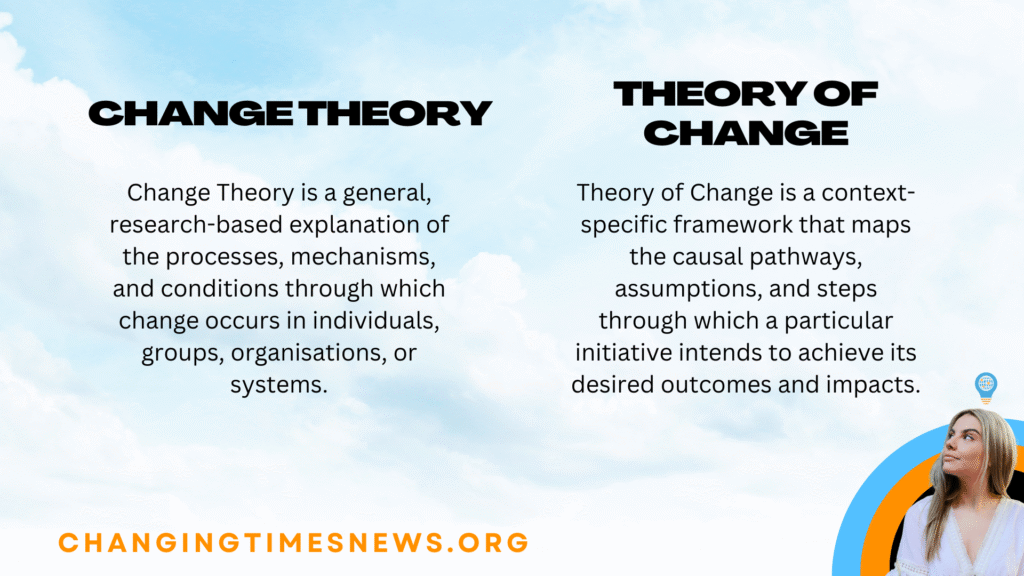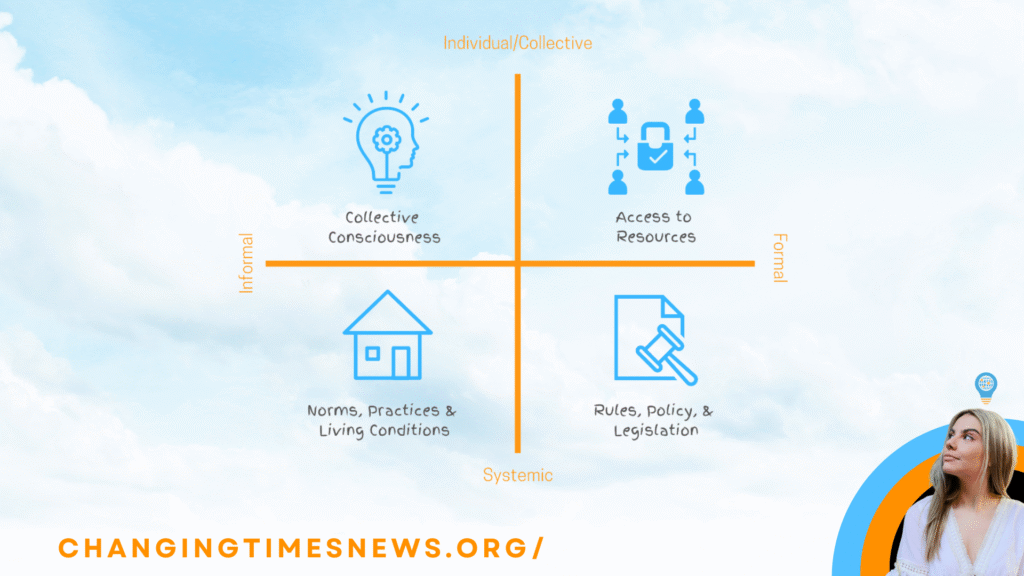In the world of social impact, terms often overlap, blur, or are used interchangeably. One example is the common confusion between “change theory” and “theory of change.” While the two sound nearly identical, they play very different roles in guiding how changemakers design, implement, and evaluate their work.
This week’s episode of Changemaker Q&A, produced by the Humanitarian Changemakers Network, dives into these distinctions — a vital step for anyone working to drive meaningful transformation, whether at the grassroots or organizational level.
What Is a Change Theory?
A change theory is a broad, conceptual framework that explains how change generally happens. These theories often originate in the social sciences — psychology, sociology, anthropology, management, and economics — and offer insights into the processes, causes, and outcomes of change.
For example, Kurt Lewin’s classic three-stage model (“unfreezing, changing, refreezing”) describes how individuals or organizations move through transformation. Similarly, the Social Cognitive Theory and the Health Belief Model explain how knowledge and environment influence health behaviors.
As the Stanford Social Innovation Review notes, these kinds of theories help practitioners ground their assumptions in established research, avoiding ad hoc or purely anecdotal approaches (SSIR, 2015).
What Is a Theory of Change?
By contrast, a theory of change is project-specific. It is a detailed roadmap that spells out how a particular initiative expects to achieve its desired impact. A theory of change typically outlines:
- The problems being addressed
- The activities planned
- The stakeholders involved
- The assumptions underpinning the work
- The expected outcomes and long-term vision
In essence, it operationalizes broader change theories within a given context. It also serves as both a planning and evaluation tool, helping practitioners test whether their interventions are achieving the outcomes they intended.
As the UK-based Centre for Theory of Change emphasizes, the method is increasingly used by NGOs, philanthropies, and community organizations to improve accountability and impact measurement.

Why the Distinction Matters
The two concepts differ in scope, purpose, and level of abstraction:
- Change theory explains how change happens in general.
- Theory of change sets out how we expect change to happen in our specific initiative.
Without anchoring a theory of change in credible change theories, interventions risk being little more than guesswork. Grounding strategies in tested frameworks enhances credibility, improves evaluation, and enables practitioners to adapt more effectively in complex social contexts.
Moving Beyond Linear Models
The episode also highlights the limitations of traditional tools such as “logic models,” which oversimplify complex change processes. Instead, frameworks like the Theory of Change Canvas — developed by the Humanitarian Changemakers Network — are designed to help grassroots practitioners map the full context of their work, from vision to impact, in a way that accounts for complexity rather than ignoring it.
This distinction may sound academic, but it has real-world consequences: projects designed without a strong theoretical backbone often fail to deliver meaningful results, while those built on credible change theories are more likely to achieve — and sustain — impact.
The Takeaway
Understanding the difference between change theory and theory of change is more than semantics. For changemakers, it’s about moving from guesswork to strategy, ensuring interventions are not only well-intentioned but also grounded, credible, and effective.
As social systems grow ever more complex, clarity about these concepts will remain essential for those working to drive meaningful change.


